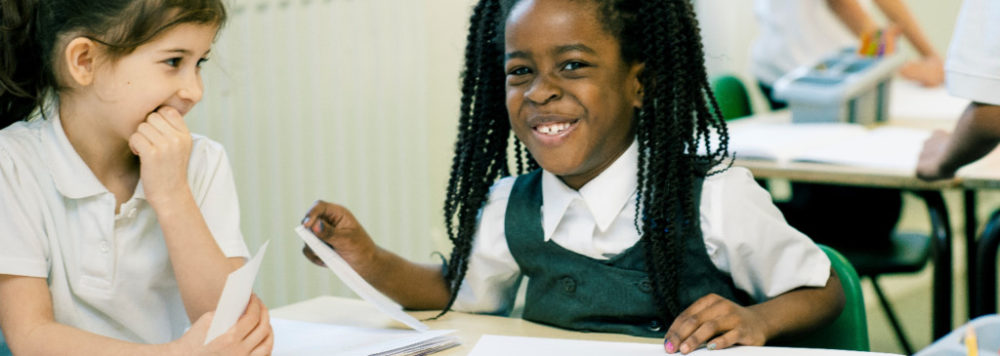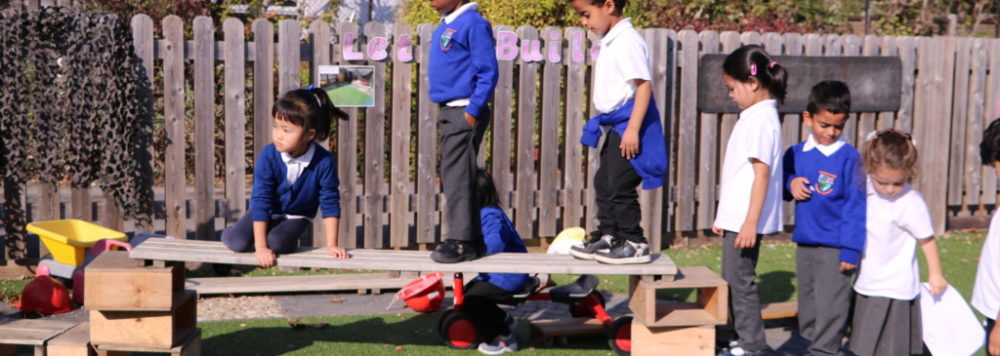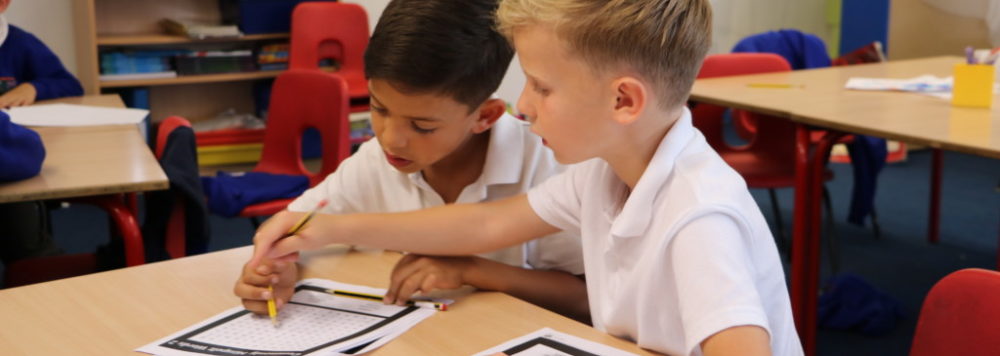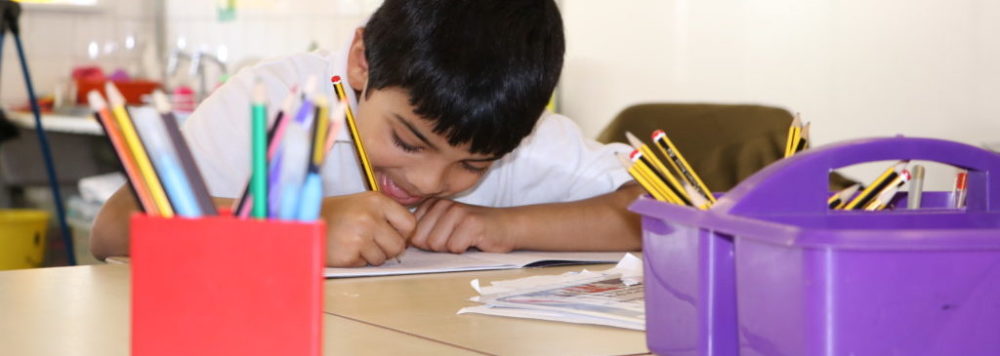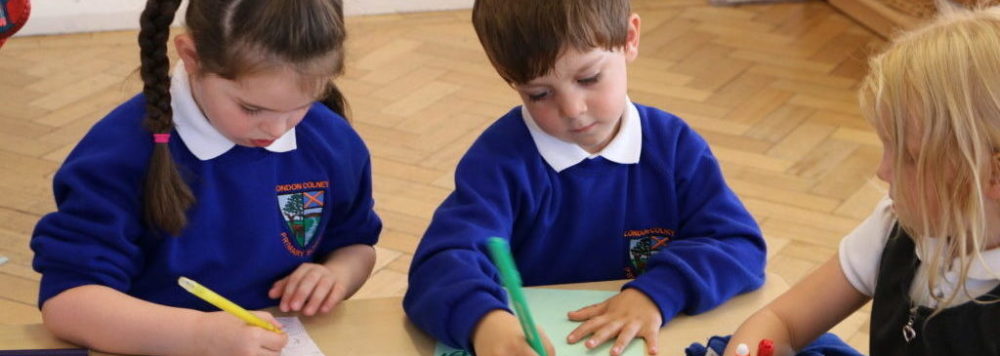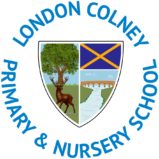At London Colney, we provide an appropriate, inclusive, engaging English curriculum. The development of children’s language is crucial to their success across the curriculum. We want all children to be excellent communicators, to listen actively and to speak with confidence. At London Colney, children are helped to develop a love of reading and to become skilful and imaginative writers. During all lessons across the school, children have the opportunity to develop their spoken language capabilities and improve their listening skills through a wide range of activities.
Planning writing is organised around the Teaching Sequence for Writing. This provides a clear learning sequence using a model text (please see core texts on our Reading Page) as the starting point to engage, exemplify and practice skills before progressing into extended writing episodes; this includes opportunities for drafting, editing and publishing writing.
Writing has a high profile in the curriculum and opportunities for writing are frequent and varied. Writing forms a key part of all subjects across the curriculum. All children get the opportunity to write for an extended period of time each week. As well as this, the writing curriculum is such that at times, writing is taught directly to pupils. This includes the teaching of writing and language skills for example technical vocabulary, spelling, grammar and punctuation. As with the reading, writing instruction is differentiated according to the needs of the children. The teaching sequence includes opportunities for several different styles of teaching. These include: modelled writing, shared writing, guided writing, paired writing and individual writing.
Teaching Approaches to Support Writing
Here at London Colney, we use the ‘Power of Reading’ devised by the Centre for Literacy in Primary Education (CLPE) to support our teaching of English and writing. The ‘Power of Reading’ aims to use rich, quality texts to develop a love of reading which in turn we believe supports a love of writing. As part of our teaching sequence for writing, we adopt and use a range of teaching approaches devised by the CLPE to support the children’s writing journey. Some of the teaching approaches we use include:
Conscience Alley – Conscience Alley is useful technique for exploring any kind of dilemma faced by a character, providing an opportunity to analyse a decisive moment in greater detail. The class forms two lines facing each other. One person (the teacher or a participant) takes the role of the protagonist and walks between the lines as each member of the group speaks their advice. It can be organised so that those on one side give opposing advice to those on the other. When the protagonist reaches the end of the alley, they make their decision.
Freeze Frame – Freeze-frames are still images or tableaux. They can be used to enable groups of children to examine a key event or situation from a story and decide in detail how it could be represented. When presenting the freeze-frame, one of the group could act as a commentator to talk through what is happening in their version of the scene, or individual characters can be asked to speak their thoughts out loud.
Hot-seating – In hot-seating, one member of the class role-plays a central character from a poem or story and is interviewed by the other children. This activity involves children closely examining a character’s motivation and responses. Before the hot-seating, they need to discuss what it is they want to know and identify questions they want answering. If children have no experience of hot-seating, the teachers may initially need to take the role.
Writing in Role – When children have explored a fictional situation through talk or role-play, they may be ready to write in role as a character in the story. Taking the role of a particular character enables young writers to see events from a different view point and involves them writing in a different voice. In role, children can often access feelings and language that are not available to them when they write as themselves.
Role on the Wall – Role on the wall is a fantastic approach for promoting inference and deduction, and getting to know and understand characters in more detail, understanding their motivations and therefore their actions at various stopping points across a text. Take an illustration of a character, or hand draw an outline of the character, you can even draw around a child in the class on a large piece of paper. On the outside, write down everything you know about the character from what you read or see in the text. This can include details about their appearance, actions, where they live etc. You can include known facts such as physical appearance, age, gender, location and occupation, as well as subjective ideas such as likes/dislikes, friends/enemies, attitudes, motivations, secrets and dreams. On the inside, start to draw inferences about what these things tell us more widely about the character, sharing their internal characteristics. These then build to give more insight into a character’s actions and motivations as you progress through a text. Using a different colour at each of the stopping points allows you to track changes in the character’s emotional journey.
Reader’s Theatre – Reader’s theatre is a valuable way for children to work in a group to perform the text. Children can begin marking or highlighting parts of the text, indicating the phrases or sections to be read by individuals or by several members of the group. This enables them to bring out the meanings, pattern and characterisation.
Story Boxes – Storyboxes create special opportunities to revisit the themselves and storylines of a particular story. Typically, they consist of a shoebox containing a range of small toys and inspirational objects. The box itself can be turned into a setting for the story using a variety of collage materials and with sides cut to fold down. However, the box is at its most effective when something intriguing or unexpected is added. Children can use the box to story tell the next episode of a story or create another story with similar setting or characters.
Independent Writing
Each week, children have the opportunity to write independently and for an extended period of time. Children will have explored the writing stimulus prior to this lesson during the week and will have prepared for their writing in the lessons prior, including learning/revising a grammatical skill that can be used within their writing. These weekly pieces of independent writing often build towards or aid children’s final piece of writing for a half term, which may often be a re-telling or re-invention of the core text they have read.
During this writing lesson, our teachers use Shared Writing approaches to model and scaffold to their pupils what they writing could look like and how to use the grammar, punctuation and spelling skills they have previously learned. As part of this shared writing, teachers will write a shared piece, taking some contributions from the class before children set to writing their own pieces.
To support their independent writing. children are provided with a writing toolkit / success criteria of what their teacher would like them to try and include in their independent writing. The content of these success criteria will look different across year groups based on the subject content they need to deliver for their year group. These success criteria may also look different for pupils in each class as we differentiate them based on the level and needs of each child. A typical success criteria would look as follows:
| Number | Skill | Me | Peer |
| T | Remember my writing target | ||
| 1 | Use a relative clause, with a relative pronoun, to provide extra information | ||
| 2 | Use dialogue which is punctuated correctly | ||
| 3 | Use semi-colons to join two sentences | ||
| 4 | CHALLENGE – Use a sub-ordinating conjunction |
Our pupils would use these success criteria within their independent writing lesson to support their composition. They also use these to help evaluate their writing during their editing lessons.
Editing
We know that when authors write their books, very rarely would they get it perfect first time, relying on the editing process to look at what has gone well and what can be further improved. It is no different here at London Colney for our children whenever they have completed their independent, extended writing. We appreciate the importance of developing children who are able to reflect upon, evaluate and edit their pieces of writing so that they can understand what works well and what can be further improved. Because of this, we devote a whole lesson to editing so that our pupils have the time to further explore their writing.
Our editing lesson and process is first and foremost built around positivity and praise, with children identifying and knowing what they have done well so that they feel empowered and inspired to continue to write. Our editing process follows a clear structure which is taught to children in our discrete editing lessons so that as they move through the school, their ability to edit well is developed. Our editing process follows these 4 steps in every editing lesson:
Find Some Fantastic – To start our editing process, children must first of all read back through their work and identify the parts that they feel are fantastic. This could be a word, phrase, sentence or whole section of their writing. Children are encouraged to not only find the part/s that they feel are fantastic, they are also ask to justify why. This may be because they have used an effective piece of vocabulary, have used something from their success criteria, have challenged themselves to include something they haven’t been asked to use or just because they like how it sounds and think it will have a desired impact on the reader. This is then recorded in books.
Prove it to my Partner – Here, children work with a partner/s to clearly identify what they have used successfully. Looking at one book at a time, children use their success criteria to find in their writing the elements they have been asked to use, highlighting these and marking in our margin what skill they have used (we like our pupils to use each thing 2 or 3 times before they say they have used it successfully). Children are supported to understand that it is ok if they do not find everything or haven’t used something enough – they can add this when up-skilling.
Up, Up, Up-skill – At this point, children have the opportunity to make their writing even better. For some of our youngest children, this may be going back and improving word choices so that they are even more effective. For our older children, this would include identify and up-skilling sections of their writing. It may be a case of adding in something further from the success criteria or that they don’t like how it reads or the impact it has on the reader. Children may use slips of paper and stick them over the original so that they can show how they have improved it.
Power to the Proofread – This last step is around proofreading and any last corrections. Here, children have one last read and look for words they have spelt wrong, incorrect or missing punctuation or sentences that don’t make sense.
Spelling
At London Colney, we use RWI Spelling as our spelling programme. Once children have completed our phonics programme, children then transition into the spelling programme, which starts at a Y2 level through to a Y6 level.

